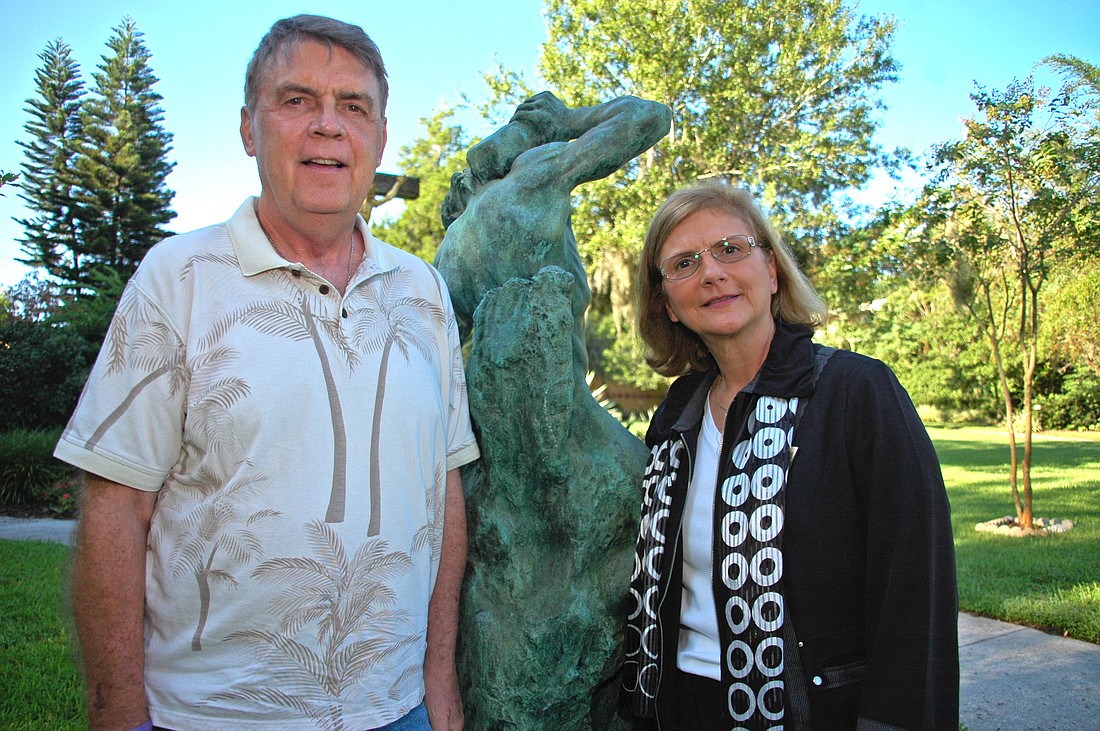- April 25, 2024
-
-
Loading

Loading

As the Czech Republic celebrates its independence this month, a key party favor — the replica of a long ago destroyed statue — has Winter Park to thank for its inclusion.
The main attraction for the celebration in the capital city of Prague has its roots just off Aloma Avenue at the Albin Polasek Museum and Sculpture Gardens. The museum, which showcases the work of the Czech-born American artist Albin Polasek, helped to recreate a 1928 sculpture the artist made of President Woodrow Wilson — who played a role in the formation of Czechoslovakia after World War I — to honor the diplomatic relationship between the U.S. and the now-Czech Republic.
The original statue on display in Prague was said to have been torn down and destroyed in 1941 by German forces that occupied Czech territory after the United States declared war on Germany.
“The statue can be thought of as Polasek’s proudest accomplishment and biggest disappointment,” said Debbie Komanski, the executive director of the Albin Polasek Museum and Sculpture Gardens.
On Wednesday, Oct. 5, because of the hard work of both the museum and the advocacy group American Friends of the Czech Republic, Polasek’s honor was restored when a replica of his Woodrow Wilson monument was revealed, Komanski said. And she, along with several other Polasek trustees, was there to see it.
Headhunt
When Robert Doubek, the founder of the American Friends of the Czech Republic, began his research of the Woodrow Wilson Monument in 2006, he was lead to Komanski and the Polasek Museum and Foundation, which owns the copyrights to Polasek’s intellectual property. From there the two organizations collaborated in hopes of recreating the monument in the most accurate way possible.
With documentation that the Germans had reduced the statue to rubble, they thought the scaling and modeling would have to be done through 80-year-old, grainy photos of the sculpture’s original unveiling in 1928.
That was until they heard rumors that part of the statue was still intact, hidden away by Czechs during the Nazi occupation.
“As far as the government was concerned, all of it was destroyed,” Komanski said. “But then we started hearing that part of it still existed, but we had our doubts. But people kept saying, ‘No, Debbie, it’s real,’ and I said, ‘Well if it’s real, we need it.’ ”
So launched a “National Treasure”-esque hunt for the missing piece.
In early 2008, Doubek said he got word that the plaster cast of the head of the statue had been located. He boarded a flight to Prague and ended up face-to-face with the larger-than-life head and bust of the statue.
“Finding the real head really brought the project together,” he said.
Handling the project
Komanski, as well as other Polasek Foundation trustees including Gary Hollingsworth and Michael Kakos, felt the statue needed to be recreated as realistically as possible. The finding of the head, Komanski said, was a key to this.
“In sculpture, having the face be identical really ensures the character of it,” she said.
To maintain other aspects of authenticity, they recruited Czech sculptors to recreate the monument and used elements from the same Czech quarry that Polasek used in the original.
Portrayed in both the original and newly cast version of Polasek’s bronze depiction of Woodrow Wilson, the late-president stands nearly 11-feet tall draped in a cloak with stars on the shoulders and fabric flowing downward to represent the American flag. Most notable, however, Komanski said, are his hands.
Wilson’s arms are laid down his sides, but his hands are arched. Komanski said Polasek was always known for the way he sculpted hands, and that Wilson’s in the monument are no exception.
“His hands are outstretched in an image of peace and calm, it says that everything is going to be OK,” Komanski said.
On the plaque attached to the statue is the quote by Wilson, “The world must be made safe for democracy.” This was a saying, Komanski said, the Czechs took to heart, labeling Wilson ‘the godfather of democracy.’ ”
The honor to craft such a symbolic statue was not lost on Polasek, thus making it’s destruction even more devastating to the artist.
“The reason the museum is so thrilled that this is happening is that this is making something right,” said Gary Hollingsworth, one of the Polasek Foundation trustees making the trip to Prague.
“Albin was wronged during this period, and I’m sure if he is looking down, he’s got a big, broad Czech-smile on his face right now, because we have returned what was destroyed.”
Learn more
For more information on events and programs sponsored by the Albin Polasek Museum and Sculpture Gardens, visit www.polasek.org. To learn more about the Woodrow Wilson Monument and the American Friends of the Czech Republic, visit www.afocr.org